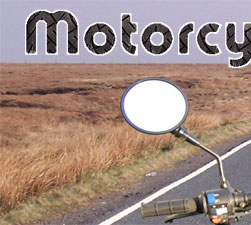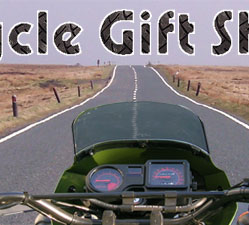|

|
For motorcycle enthusiasts, taking a passenger for a ride can be a great way to share their passion with those close to them. Riding a motorcycle with a passenger does come with certain challenges. A passenger's weight will reduce the ability to accelerate and increase the bike's stopping distance. The change in weight distribution can affect the motorcycle's handling abilities as well. With practice and attention to a couple of details, riding a motorcycle with a passenger can be a great experience.
Not all motorcycles are designed to accommodate a passenger. A motorcycle must be equipped with a second set of foot pegs to ride two up safely and legally. The motorcycle's seat must be large enough to accommodate the second rider without crowding or sitting too far forward. Many motorcycles come with a sissy bar that functions as a backrest for the passenger but it isn't required for safe riding, just additional comfort. Before beginning the ride, adjust the suspension settings and tire pressure to accept the extra weight. All motorcycles have a maximum carrying capacity (listed in the owner's manual) make sure operator, passenger and any cargo will not exceed this maximum capacity.

Your passenger should be equipped with the same protective gear as the rider. You should give your passenger some instructions before they ever get on the vehicle.
- The passenger should get on after the operator has mounted the bike and started the engine. The transmission should be in neutral and the operator should hold the front brake as the passenger mounts.
- The passenger should sit as far forward on the motorcycle's seat as possible without crowding the operator. This will help maintain the motorcycle's intended weight distribution as much as possible.
- The passenger should firmly hold the firmly to the operator's waist, hips, or belt.
- The passenger should leave both feet on the foot pegs at all times.
- The passenger should be aware of the motorcycle's hot and moving parts (exhaust pipe, chain, etc.) They should keep their hands and feet away from these hazards.
- The passenger should mimic the operator's motions - leaning as they lean and turning their head in the direction of the turn (looking over the operator's shoulder). They should avoid any unnecessary motion.
- The passenger should tighten their grip when starting from a stop, when slowing to a stop or when approaching surface irregularities.
- Unless you have a two way communicator, it is difficult to hear each other while riding. Discuss some hand signals before riding so the passenger can communicate a desire to slow down or stop and the operator can advise the passenger of rough terrain or sudden motions.
Once you begin riding, try to operate the motorcycle as smoothly as possible since sharp and sudden motions will be hard for inexperienced passengers to react to. Accelerate gradually and ride slower with a passenger than you would alone. Maintain a greater following distance and increase the space cushion to the left and right so you have more time to react and can better avoid sudden movements. Start slowing earlier and do so more gradually. Take corners slowly so you don't have to lean as much.
When a motorcycle rider first learns to ride, it is natural to want to take friends for rides. For the safety of operator and passenger, it is important for the operator to accurately assess his skill level ahead of time. Riding with another person is very different from riding alone. An operator must be a very proficient rider to be able to focus on controlling the bike, monitoring and reacting to other vehicles and adjusting to the movements of their own passengers. Novice motorcycle riders should not be taking passengers for joy rides. A motorcycle rider should have at least six months experience and/or 1000 miles under their belt before riding two up.
One piece of motorcycle gear that can be very
useful when riding a motorcycle with a passenger is a motorcycle
helmet intercom. Though you can certainly ride without them,
it is useful for communicating your intentions to your passenger
and checking in with them to make sure they're comfortable
during the ride. To learn more about the features available
check out http://www.MotorcycleGiftShop.com/motorcycle_intercoms.html


|






